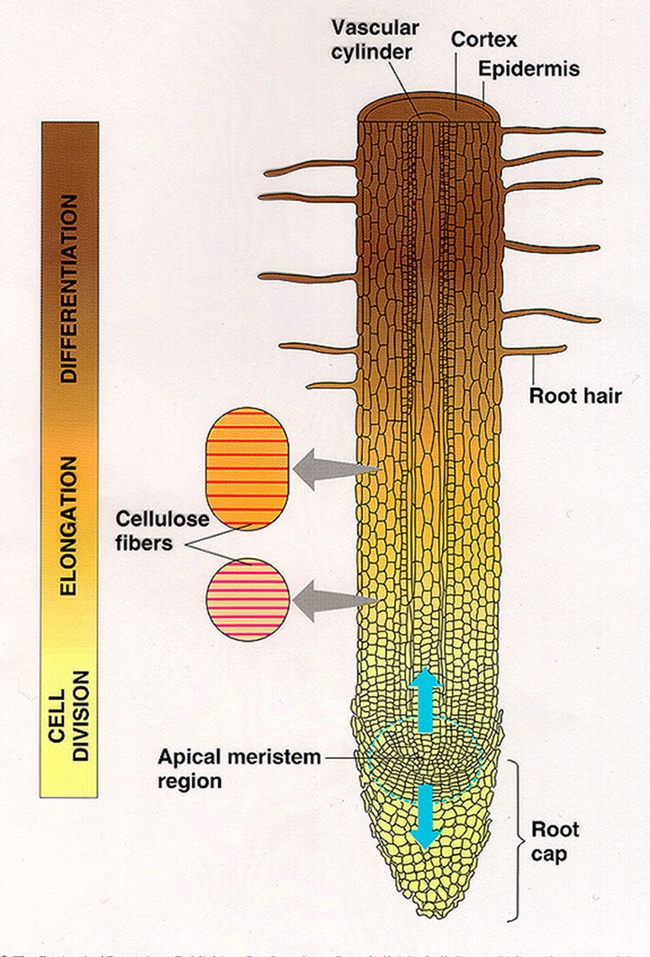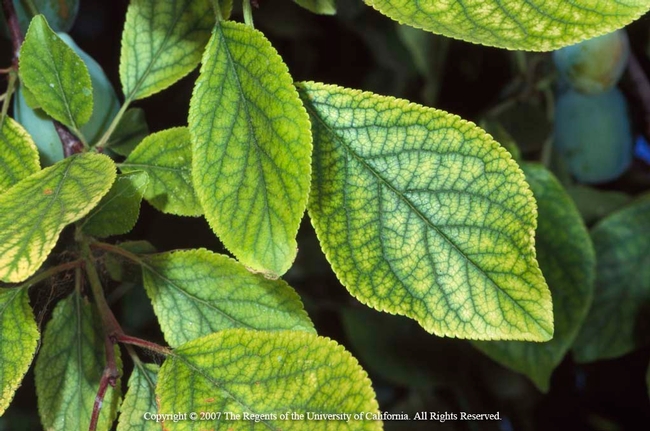Roots are often overlooked by horticulturists but deserve to get more attention. Of course, they are usually underground and out of sight so it's somewhat understandable why they can be ignored. But, roots play a critical role in the life of a plant. They anchor the plant to support the shoots above. They absorb water and mineral nutrients and conduct them upwards. They store carbohydrates and other nutrients that are a source of energy for biennials and perennials as they awaken and grow in spring. A root's tip is where most of the action takes place.
The root tip has overlapping zones: where cells divide, elongate, or form different specialized cells. At the very tip, the root cap protects the rapidly dividing cells known as the meristematic region or meristem (zone of cell division). Behind the meristem, cells elongate and push the meristem and root cap forward into the soil so the root can explore and mine new soil (zone of elongation). And further back, only a fraction of an inch, is the portion where elongation stops and cells become more specialized and functional (zone of differentiation).
Root hairs form in the zone of differentiation and this is where they begin to poke out into the soil to absorb water and mineral nutrients. Root hairs greatly increase the root surface area and therefore increase the ability of a plant to absorb water and nutrients. Vascular tissue (vascular cylinder) is the the piping that helps conduct water and nutrients upward to the shoots. The epidermis forms the protective skin of the roots.
Root hairs are long, thin, single cell extensions from the epidermis. They profoundly increase the overall root surface area and connection with the soil and are responsible for absorbing water and mineral nutrients. Usually they are short-lived, only functional for several days or weeks. So as the root tip advances into virgin soil, new root hairs must be formed continuously. It is important to keep root hairs healthy. The overall vigor of a plant can often be judged by looking at the condition of the root hairs. A nursery scout should remove the pot if possible and look for healthy, usually white, root tips and hairs.
Interveinal chlorosis is indicative of a deficiency in iron in the leaves (and sometimes manganese or zinc deficiencies). But this does not mean that the soil necessarily has low levels of these nutrients. Unhealthy root hairs or the conditions that they are growing might be to blame. Sometimes high soil pH makes iron less available for uptake. Iron is tightly held by soil and must be mined by actively growing roots. When soil is cold in the spring and roots inactive, sometimes iron might not be sufficiently mined and absorbed. Sometimes root diseases such as Pythium and Rhizoctonia might kill root hairs or reduce their functionality.


